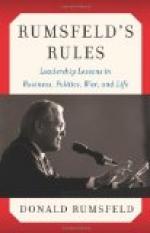The Boer plan was dictated by the configuration of the frontier and of the obstacles and communications in Northern Natal. The various columns to the north of the Biggarsberg had only to move forward in order to effect their junction on the Newcastle-Dundee road, and their advance southwards on that road would enable them at Dundee to meet the column from Landman’s Drift. The movement, if well timed, must lead to an enveloping attack upon Sir Penn Symons, whose brigade would thus have to resist an assault delivered in the most dangerous form by a force of twenty thousand men. From the point of view of the Boer Commander-in-Chief, the danger was that the Glencoe and Dundee force should escape his blow by retiring to Ladysmith, or should be reinforced by the bulk of the Ladysmith force before his own combined blow could be delivered. It was essential for him to keep Sir George White at Ladysmith and also to cut the communications between Glencoe and Ladysmith. Accordingly, on Wednesday, the 18th, the Free State forces from Albertina, the heads of whose columns had been shown on Tuesday, moved forward towards Acton Homes and Bester’s Station, and led Sir George White to hope for the opportunity to strike a blow at them on Thursday, the 18th. At the same time a detachment from the main column was pushed on southwards, and was able on Thursday, while Sir George White was watching the Free State columns, to reach the Glencoe-Ladysmith line near Elandslaagte, to break it up, and to take position to check any northward movement from Ladysmith. Everything was thus ready for the blow to be struck at Dundee, but by some want of concert the combination was imperfect. On Friday morning the Landman’s Drift column, which had been reinforced during the previous days by a part of the Newcastle column, was in position on the two hills to the east of Dundee, and began shelling the British camp at long range. At the same time the column from the north was within




